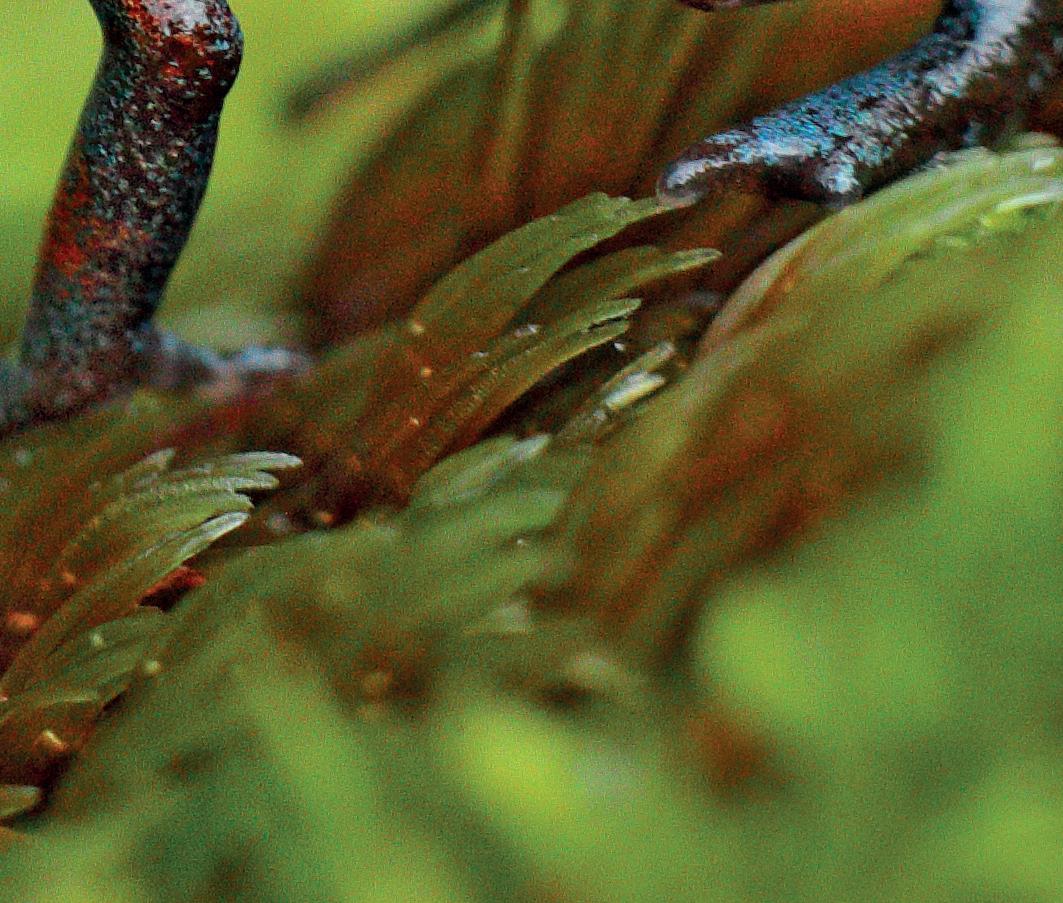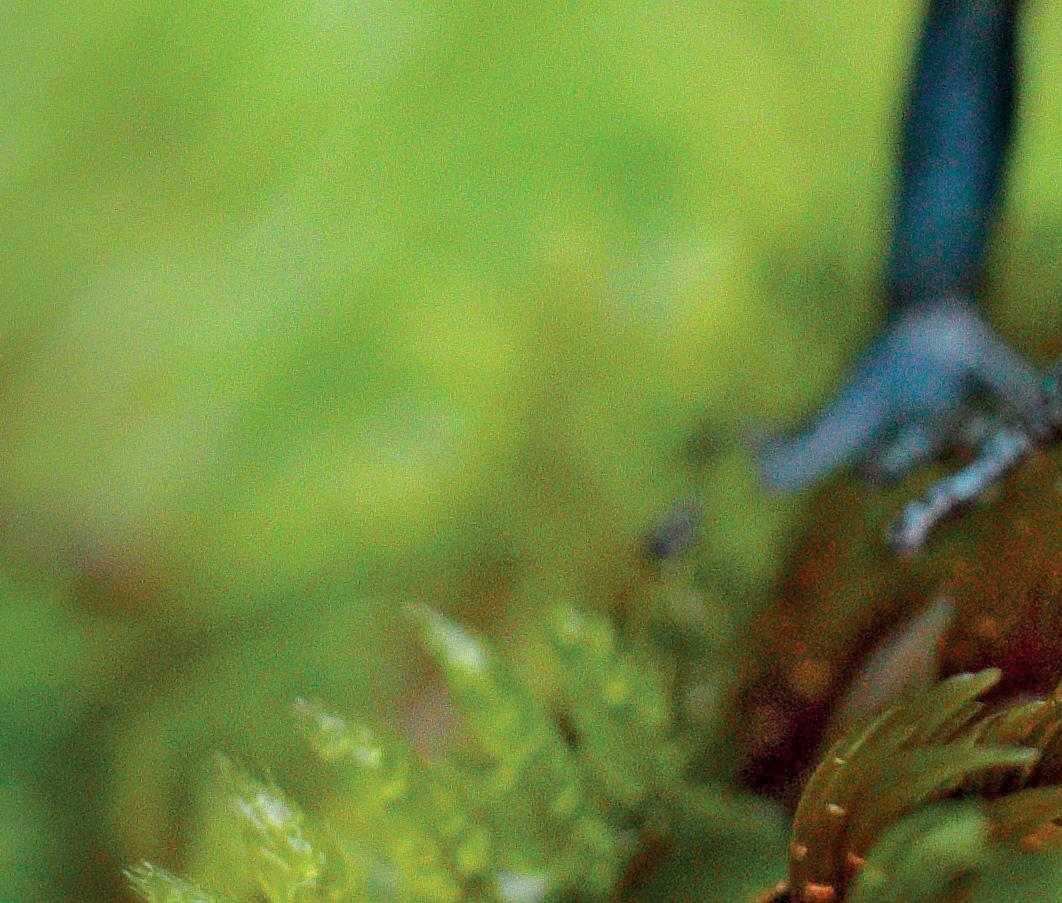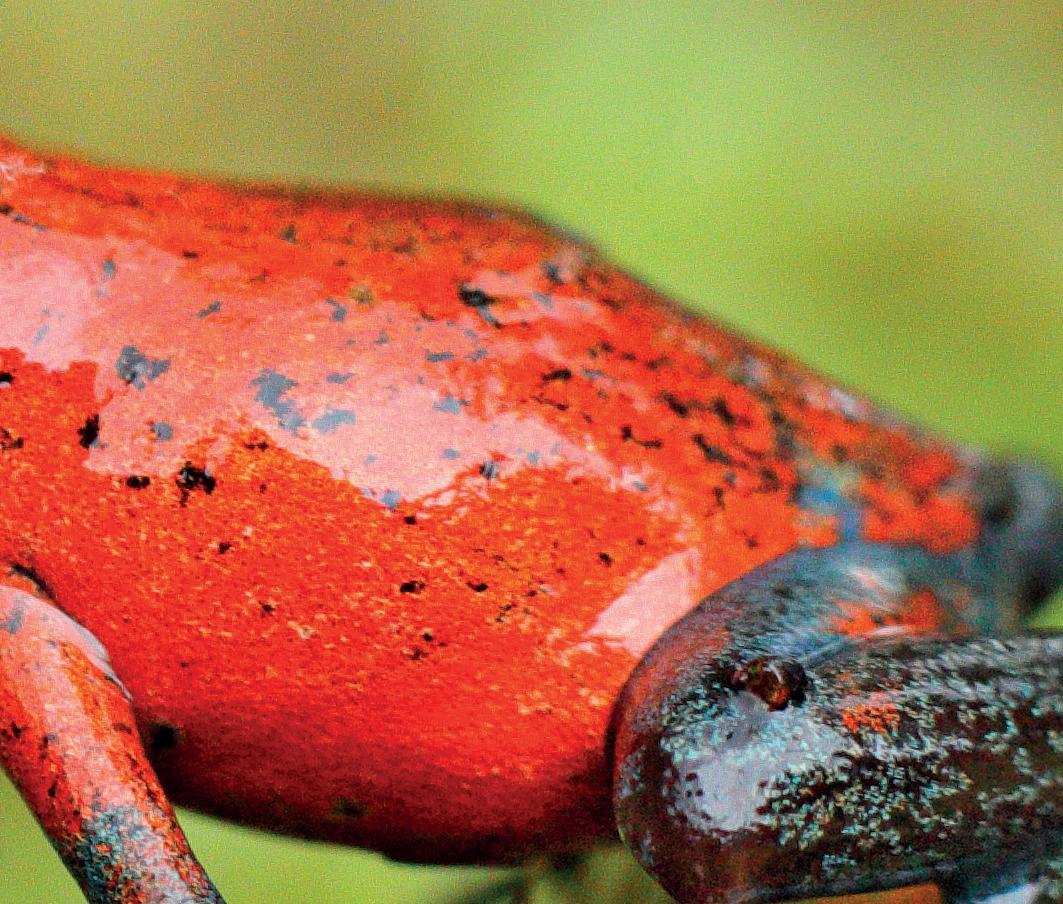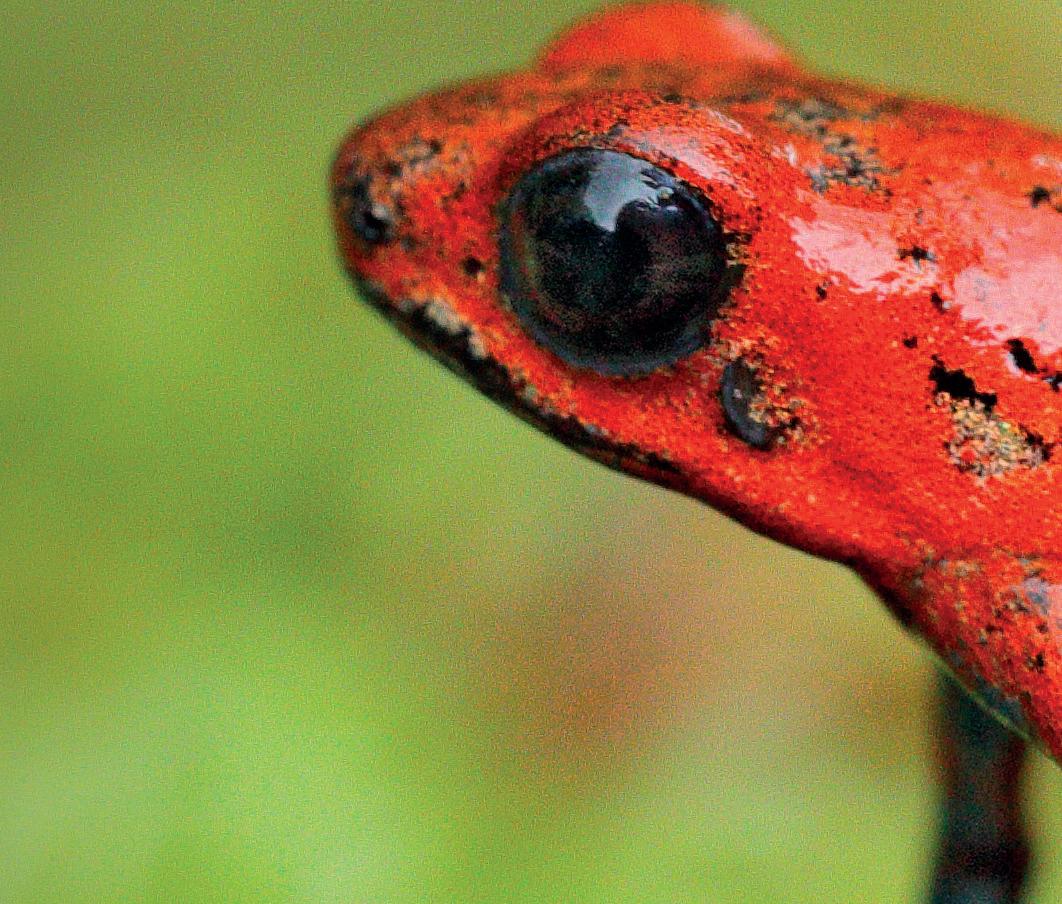
3 minute read
Chytrid Fungus Amphibian Crisis

On Montserrat in the eastern Caribbean, the Mountain Chicken Frog Recovery Programme is implementing a field intervention initiative where ambient temperatures in semi-wild enclosures on the island are raised. This is achieved by removing canopy cover so that conditions are favourable for captive reared and released frogs - but less favourable for Bd. Furthermore, these enclosures contain ponds that are heated to temperatures that will kill Bd (>30°C); when amphibians become clinically ill with chytridiomycosis they spend prolonged periods of time in water as they have osmoregulatory difficulties, so heated ponds will provide an area where frogs can reduce chytrid infection burdens. The team at ZSL London Zoo tested whether frogs used the heated water baths before any interventions were made in the field. Heated water baths were placed in mountain chicken enclosures at ZSL London Zoo in addition to water baths of standard temperature. Time lapse footage was used to monitor usage and the heated water baths were widely used by the captive frogs, with some individuals showing strong preference for heated baths over background temperature, with no observed negative impact.
Advertisement
Another method was tested in Mallorca where isolated populations of the Mallorcan midwife toad (Alytes muletensis) were infected with Bd. Midwife toad larvae were removed from site and treated for Bd. At the same time the entire environment was exposed to a chytrid-killing, biodegradable disinfectant. Chytrid appeared to have been successfully removed from a site for the first time. Whilst offering a glimmer of hope, this work was undertaken at a site with just one amphibian species and it would be incredibly difficult to apply this method to more complex, species-rich systems.
Treatment protocols for captive amphibians have also been further developed, even for poorly


How you can help
known species of caecilians. The caecilian species Geotrypetes seraphini and Potomotyphlus kaupii were treated using 0.01% solutions of the antifungal itraconazole for 30-minute immersions over the course of 11 days. The treatments were considered successful when at least 2 tests for Bd came back negative after treatment periods. This provides a promising outcome, at the very least, for captive populations that become infected with Bd. Other species can be treated by adapting methods used for frogs to other members of Amphibia.
These methods do have somewhat positive outcomes but are only applicable in certain circumstances. “You need to choose your treatment depending on the context of the species you want to treat,” Ben told us. “For Bsal, there are antifungal and heat treatments – but salamanders often live in cool areas, so heat treatment may not be a viable treatment for all salamanders. But there has been far less research undertaken to date on treatment for Bsal.”
Hobbyist contributions


We asked Ben about the role that private hobbyists might play in the quest to preserve species in captive environments alongside zoos and conservation organisations. He answered, “When it comes to establishing conservation breeding programmes in the private sector, it can be difficult to regulate how they operate, but there are cases where private breeders have been involved in programmes.
I think that the collaboration between zoos and private keepers is really important because often, the private keepers dedicate a huge amount of time and effort into one particular species – and often their skills and knowledge of a particular species is unparalleled.”
Reliant on income from ticket sales to care for the animals at their two zoos, ZSL London and Whipsnade - and to fund ZSL’s global conservation and science work - enforced closures as a result of the January lockdown have put the international conservation charity under huge financial pressure. Vets and zookeepers will continue to provide the highest level of care for their animals, working throughout the lockdown. ZSL is calling on the public to help ensure they remain open by donating to ZSL at www.zsl.org/donate
Challenges to face

One of the main hurdles to amphibian conservation is a lack of resources and funding. Conservation funding is often allocated to more charismatic mammals and birds that people are more familiar with. We often see images of lions, rhinos and pandas on our television screens (and rightfully so!) – but support and interest from the public in the conservation of herpetofauna is next to non-existent in comparison.


It is worth hoping that these discussions will help the plight of amphibians reach a wider audience so a greater diversity of people may understand that the loss of hundreds of amphibian species is a very real threat. But why should they care?

Herpetofauna, amphibians included, play key roles in their natural ecosystems as both predators and prey. Removing one link from the food chain can have very disastrous effects on all the other organisms in that area. In fact, a recently published study found a relationship between chytrid driven amphibian declines in central America and increased instances of malaria outbreaks. So, it really isn’t just about animal ecosystems – it all comes back to us too.



By supporting the work at ZSL, you support the work that goes into conservation, including the challenge of tackling the global amphibian crisis and preserving these amazing little creatures for generations to come and the benefit of everyone.











